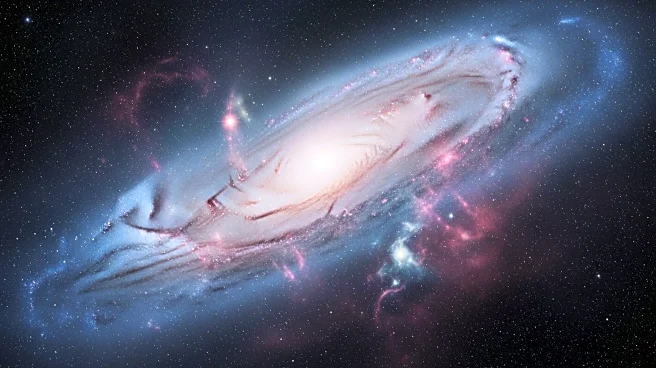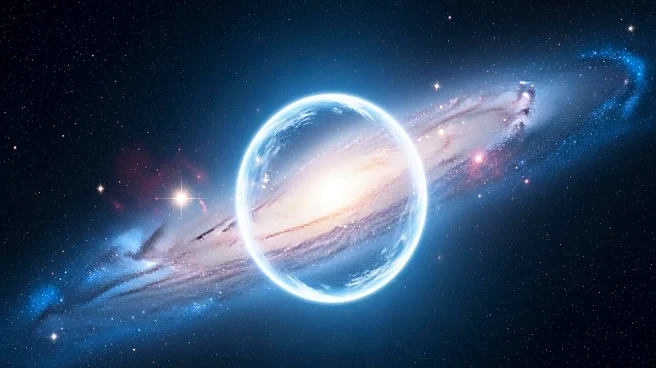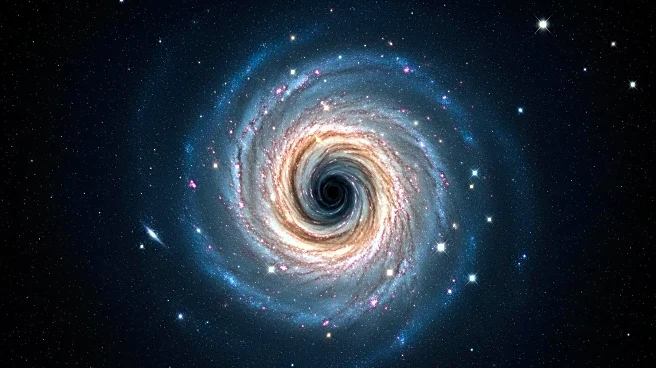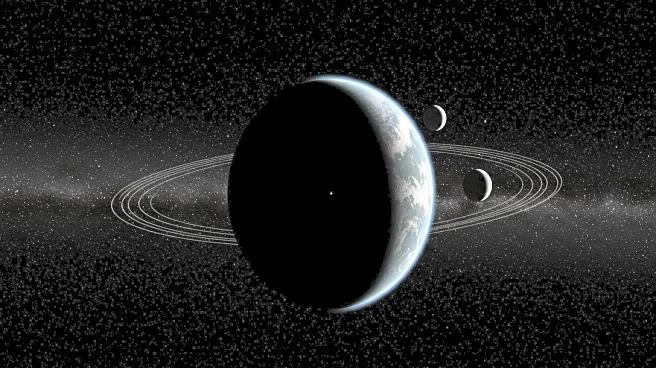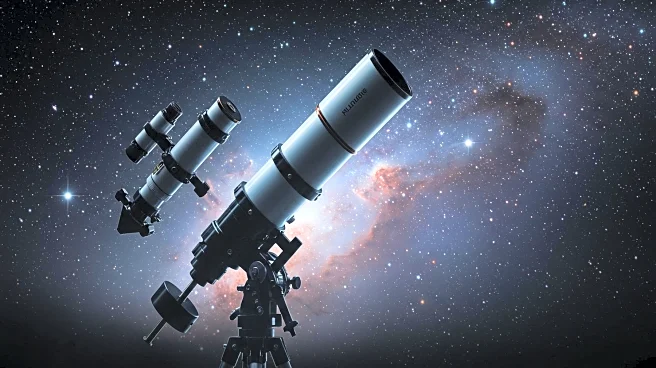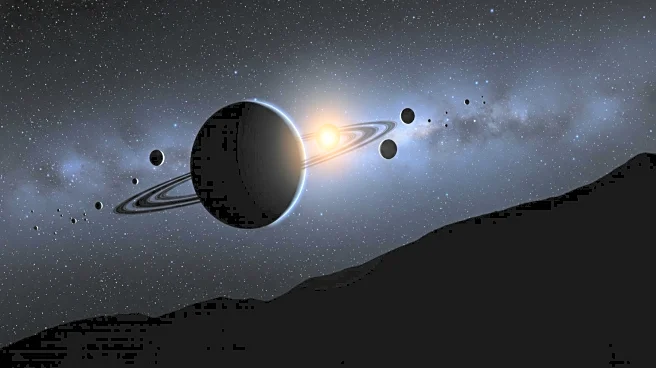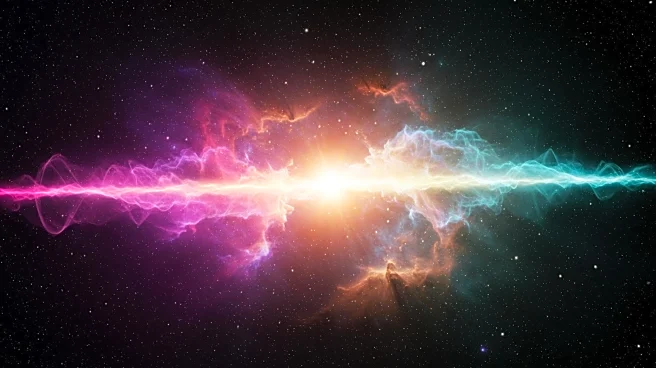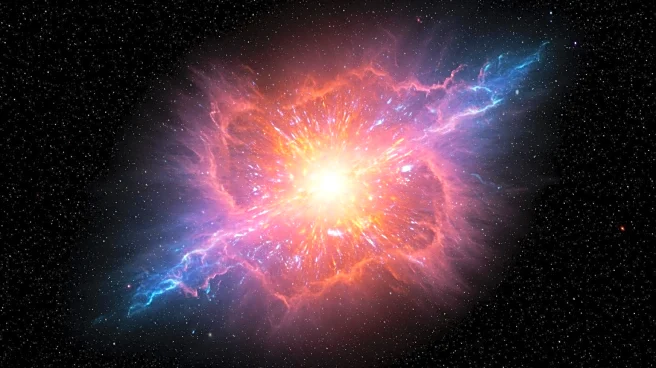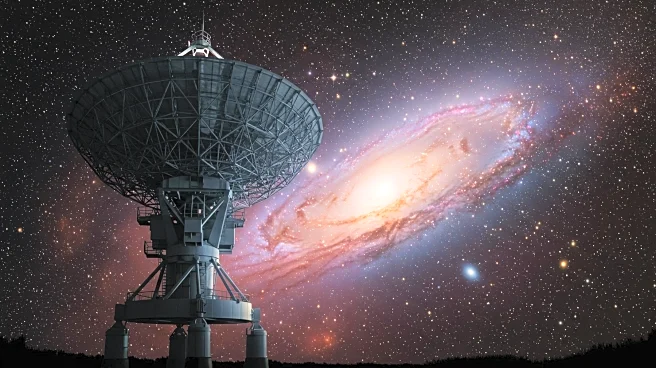Rapid Read • 7 min read
An international team of astronomers has discovered a new planet, WISPIT 2b, forming around a young star similar to our Sun. The planet, estimated to be about 5 million years old, is likely a gas giant comparable in size to Jupiter. This discovery was made using the European Southern Observatory's Very Large Telescope in Chile. The planet was detected within a multi-ringed dust disk, marking only the second time a planet has been confirmed at such an early evolutionary stage. The study was led by Leiden University, the University of Galway, and the University of Arizona, and published in the Astrophysical Journal Letters.
AD
The discovery of WISPIT 2b provides valuable insights into planet formation processes, particularly in multi-ringed disks. This finding enhances our understanding of how gas giants form and evolve, offering a unique opportunity to study planet-disk interactions. The research could have broader implications for understanding the diversity of planetary systems and the conditions that lead to planet formation. For the scientific community, this discovery represents a significant advancement in the field of astrophysics and could guide future research on planet formation.
The research team plans to conduct follow-up observations to further study WISPIT 2b and its surrounding disk. These observations will help confirm the planet's characteristics and its interaction with the disk. The findings may also prompt additional studies on similar young stars and their potential to host forming planets. As the study of WISPIT 2b progresses, it could lead to new models and theories about planet formation, influencing future astronomical research and exploration.
AD
More Stories You Might Enjoy
